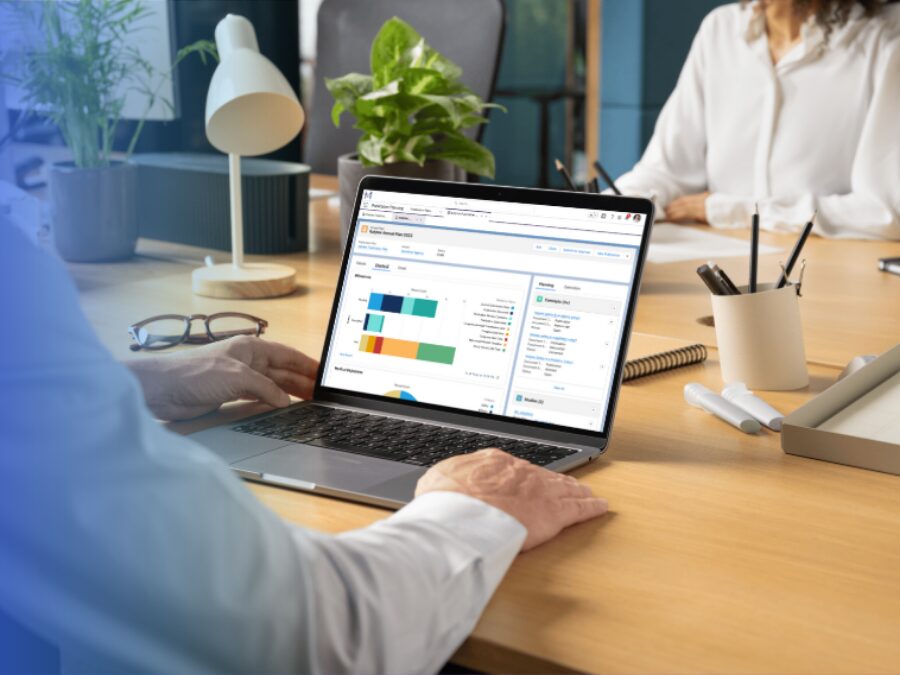The pharmaceutical industry just reached a turning point and Dreamforce 2025 made it impossible to ignore. With the official launch of Agentforce Life Sciences (formerly Life Sciences Cloud), AI has moved from experiment to execution. Instead of systems that simply record activity, we now have workflows that can act on behalf of Commercial teams.
For teams already managing patent cliffs, regulatory pressure, and siloed systems, platform decisions can feel like one more layer of complexity. But at Dreamforce, a common thread emerged: most organizations are struggling with data chaos. When information lives in too many places, progress slows, decisions stall, and compliance becomes harder to maintain.
Salesforce’s answer is openness. Instead of forcing data into a closed model, it’s building an ecosystem designed to work with the tools companies already use. Data 360 (formerly Data Cloud) connects securely with platforms like Snowflake and Databricks, allowing teams to use trusted data in real time without duplication.
Organizations that treat data unification as a foundation, not a future goal, will be ready to take advantage of what comes next.
From CRM to Agentic Life Sciences Enterprise
Dreamforce 2025 marked the official debut of Agentforce Life Sciences, a Salesforce-native solution built for the clinical-to-commercial journey. This isn’t a traditional CRM; it’s a shift toward workflows that learn, adapt, and act on behalf of teams.
The platform includes pre-configured capabilities for clinical trials, patient services, HCP engagement, and field productivity. Companies are already seeing the benefits of connecting their systems and people through an open, interoperable approach.
If you work in the field, the message was clear: time with HCPs is shrinking, and teams need to make every interaction count.
-
AI-Powered HCP Engagement: Agents can prepare reps and MSLs before visits, surface approved data, and generate compliant follow-ups automatically.
-
Unified Customer View: Fresenius Kabi now runs its global engagement from a single Salesforce platform, used across commercial, service, and medical teams.
-
Next-Best Actions That Make Sense: Agents can suggest relevant content or timing based on live data, replacing guesswork with context.
When technology handles the administrative work, people can focus on what really matters: meaningful engagement that improves patient outcomes.
The Role of Data 360
Behind every intelligent workflow is clean, connected data. That’s where Data 360 comes in. It was a centerpiece at Dreamforce, powering nearly every new Agentforce capability and setting the foundation for the agentic enterprise.
Data 360 turns unstructured documents into usable insights, integrates securely with existing data lakes, and applies built-in governance through the Einstein Trust Layer and Privacy Center. Tableau Semantics aligns metrics across departments so everyone is working from the same definitions.
For life sciences, that means finally being able to build unified patient and HCP profiles that combine HUB, claims, and pharmacy data into one compliant view. The result is faster onboarding, smarter segmentation, and better coordination between Medical and Commercial teams.
If you’re exploring Agentforce Life Sciences, Data 360 isn’t an add-on. It’s the foundation of how these systems think and act responsibly.
Why This Matters Now for Life Sciences Leaders
The challenges haven’t changed. Patent cliffs still threaten revenue, approval cycles remain slow, providers are stretched thin, and patients still wait too long for treatments. What has changed is the ability to do something about it.
With agentic AI, unified data, and industry-specific solutions, life sciences organizations can:
-
Shorten clinical development timelines
-
Reduce trial dropout rates
-
Eliminate delays in therapy access
-
Boost field productivity
-
Shift patient services from reactive to proactive care
Technology is no longer the barrier. The next step is deciding how to structure, govern, and scale it in a way that supports your people.
A Practical Path Forward
Dreamforce 2025 showed what’s possible, but real transformation takes more than technology. Success depends on expertise that bridges Salesforce capabilities with life sciences realities. Even a purpose-built CRM can’t meet every organization’s unique requirements out of the box.
For Commercial leaders evaluating Agentforce Life Sciences, it’s worth asking:
-
Where are manual processes slowing your work?
-
How could unified data improve decision-making?
-
What would happen if AI handled 70% of routine tasks?
-
Is your data ready for AI-driven automation?
-
What’s your plan for reducing data chaos across systems?
The window for competitive advantage is open now. As more organizations adopt agentic workflows, the bar will only rise.
The Opportunity Ahead
Dreamforce 2025 wasn’t just about new technology; it was about momentum. The life sciences community is ready to move faster, connect more intelligently, and create greater impact for patients.
Mavens brings over 15 years of experience helping life sciences teams operationalize Salesforce in regulated environments. We focus on practical solutions that reduce friction, empower teams, and make data work harder so people don’t have to.
We’ve already built the future of Medical Affairs on Salesforce. Our Medical Affairs Suite—including Medical Information, Scientific Publications, and Research & Grants—is proven in validated environments and aligns with the same ecosystem that Agentforce Life Sciences. Now we’re extending that knowledge to implementing Agentforce Life Sciences.
Contact Mavens to talk about how Agentforce Life Sciences and Data 360 can accelerate your path from molecule to market.

